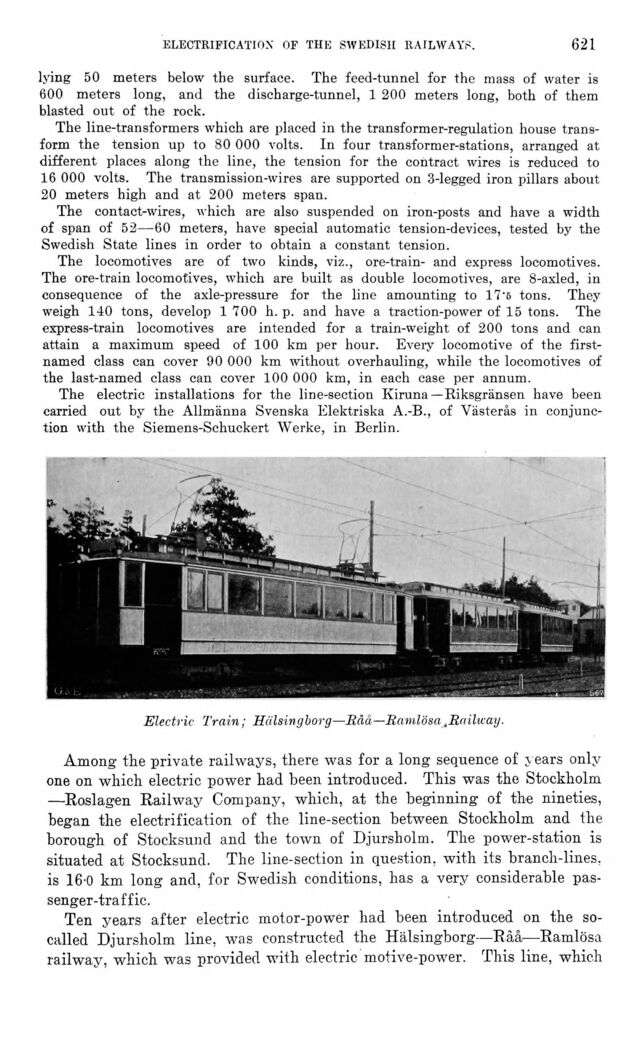
Full resolution (JPEG) - On this page / på denna sida - X. Internal Communications - 1. Railways. By [G. Welin] T. Hamnell

<< prev. page << föreg. sida << >> nästa sida >> next page >>
Below is the raw OCR text
from the above scanned image.
Do you see an error? Proofread the page now!
Här nedan syns maskintolkade texten från faksimilbilden ovan.
Ser du något fel? Korrekturläs sidan nu!
This page has never been proofread. / Denna sida har aldrig korrekturlästs.
electrification of the swedish railways.
621
lying 50 meters below the surface. The feed-tunnel for the mass of water is
600 meters long, and the discharge-tunnel, 1 200 meters long, both of them
blasted out of the röck.
The line-transformers which are placed in the transformer-regulation house
transform the tension up to 80 000 volts. In four transformer-stations, arranged at
different places along the line, the tension for the contract wires is reduced to
16 000 volts. The transmission-wires are supported on 3-legged iron pillars about
20 meters high and at 200 meters span.
The contact-wires, which are also suspended on iron-posts and have a width
of span of 52—60 meters, have special automatic tension-devices, tested by the
Swedish State lines in order to obtain a constant tension.
The locomotives are of two kinds, viz., ore-train- and express locomotives.
The ore-train locomotives, which are built as double locomotives, are 8-axled, in
consequence of the axle-pressure for the line amounting to 17’o tons. They
weigh 140 tons, develop 1 700 h. p. and have a traction-power of 15 tons. The
express-train locomotives are intended for a train-weight, of 200 tons and can
attain a maximum speed of 100 km per hour. Every locomotive of the
first-named class can cover 90 000 km without overhauling, while the locomotives of
the last-named class can cover 100 000 km, in each case per annum.
The electric installations for the line-section Kiruna—Riksgränsen have been
carried out by the Allmänna Svenska Elektriska A.-B., of Västerås in
conjunction with the Siemens-Schuckert Werke, in Berlin.
Electric Train; Hälsingborg—Råå—Ramlösa .Railway.
Among the private railways, there was for a long sequence of years only
one on which electric power had been introduced. This was the Stockholm
—Roslagen Railway Company, which, at the beginning of the nineties,
began the electrification of the line-section between Stockholm and the
borough of Stocksund and the town of Djursholm. The power-station is
situated at Stocksund. The line-section in question, with its branch-lines,
is 16-0 km long and, for Swedish conditions, has a very considerable
passenger-traffic.
Ten years after electric motor-power had been introduced on the
so-called Djursholm line, was constructed the Hälsingborg—Råå—Ramlösa
railway, which was provided with electric motive-power. This line, which
<< prev. page << föreg. sida << >> nästa sida >> next page >>